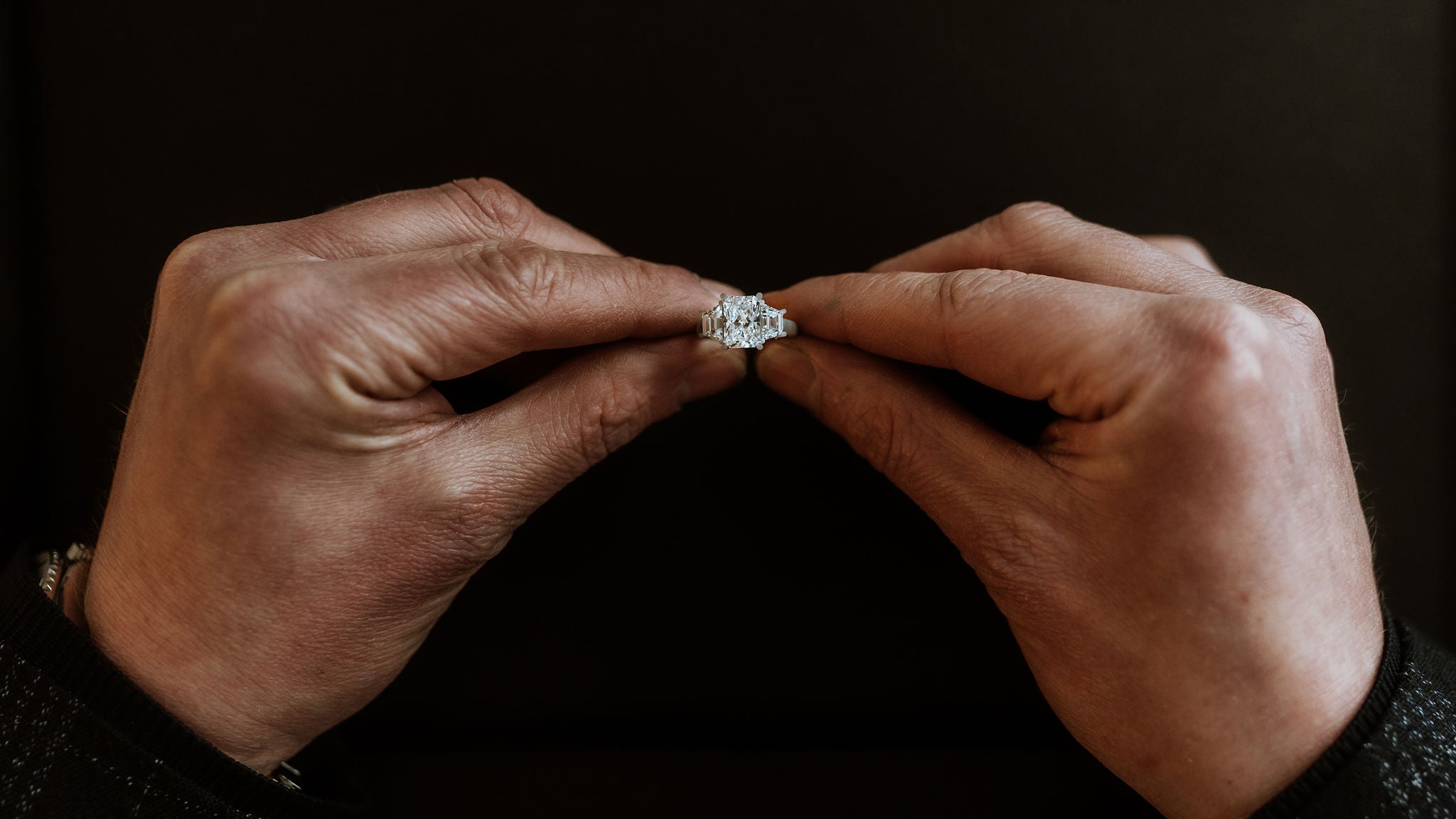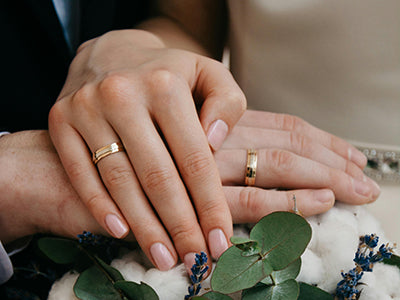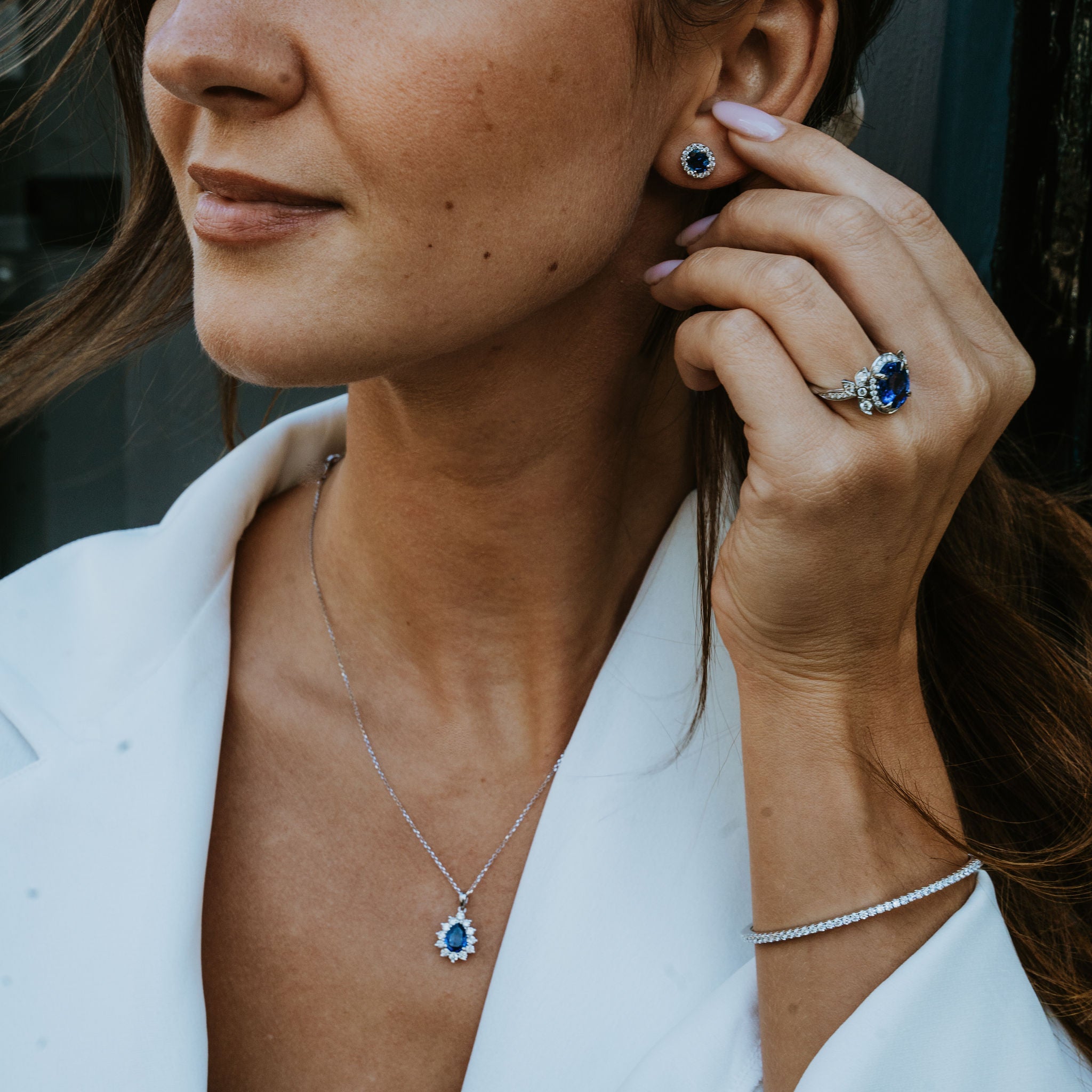 The first mention one might hear of emerald cut engagement rings might be somewhat misleading. In the overwhelming majority of cases, it won’t actually be an emerald at all, but a diamond.
The first mention one might hear of emerald cut engagement rings might be somewhat misleading. In the overwhelming majority of cases, it won’t actually be an emerald at all, but a diamond.
Indeed, a case in point recently made the news in the celebrity world as rapper French Montana proposed to the princess of Dubai, Sheikha Mahra, with an emerald cut ring, but the stone in question was a magnificent diamond.
The item reportedly cost $1.1 million (£820,000), so it’s safe to say that you probably won’t be coming to us requesting a bespoke ring that is exactly like this one. However, the style itself is very common and many of our customers will indeed be popping the question with a ring that features an emerald cut diamond.
All this may prompt a few questions. Why is it called an emerald cut? Why would you not have an emerald on an engagement ring? And why choose this particular cut for a diamond?
A Matter Of Hardness
The first two questions can be answered with reference to the Mohs scale. This measures the hardness of substances and is particularly useful with gems because it reveals just how suitable any gem in an item of jewellery will be for everyday wear, as an engagement or wedding ring would be, rather than rings used for special occasions.
It measures up to 10, with this being the exceptional hardness of diamonds. Nothing else is as hard. Next, at 9, are corundums, which include rubies and sapphires, which means they are also very robust, making them also a good choice for rings, but not as hard as diamonds.
However, the scale works on a curve, not a straight line, which means corundums are not 90 per cent of the hardness of a diamond. When we come to emeralds, at 7.5 to 8 on the scale, they are not three-quarters of the strength of a diamond, nor even close.
It is for this reason that emeralds are not ideal for engagement rings, as the wear and tear of everyday life would be much more likely to damage the stone, which is a minimal risk with harder gems.
Quite simply, emeralds are a comparatively soft material and one more prone to being chipped or scratched than corundum, while nothing can scratch or cut diamonds apart from other diamonds.
Why The Emerald Cut Was Invented
This fact influenced the development of the emerald cut, which was originally just for emeralds. Initially known as the ‘table cut’, it was developed in the 1500s as a means of minimising the relative weaknesses of the stone. The flat top and rectangular edges were all designed to reduce the risks of chipping. In addition, it was found to enhance the colour.
Such considerations may still apply today, although if you want any emerald jewellery, you can also get it with other cuts, such as Asscher cuts, cushion cuts and oval cuts.
The origins of the emerald cut may be based on the particular qualities of a unique gem, this being the only one of the four precious stones (as opposed to semi-precious, which covers everything else, such as garnets, quartz, opals and so on) that is not extremely hard. Nonetheless, the style, while having a practical element, is still very attractive.
Why Have A Diamond In An Emerald Cut?
Protecting potential vulnerabilities to damage is not a consideration with diamonds and nor is colour, but the style still has lots to recommend when applied with diamonds.
Firstly, there is an element of vintage fashion about them. The use of emerald cuts in diamonds first became common in the 1920s, when the Art Deco era arrived. Fitting well with the styles of furniture, architecture and fashion of this era, it proved highly popular with diamond jewellery as well.
Secondly, there is a clear visual appeal. The cut has over 50 facets and all these little angles, while enhancing the green of an emerald, help to produce a beautiful sparkle effect, with all the colours of the rainbow. If ever there was a diamond for an engagement ring made to stand out, this is it.
Of course, some would say any cut of diamond is likely to be beautiful, but for some, the intricacy, neatness of the straight lines, simplicity of the flat top and glinting, attention-grabbing sparkle all make the emerald cut a great choice for a diamond ring.
Your diamond might not be of the size seen in some rings given by the rich and famous, but even on a smaller diamond, the effect can be compelling.
Quite simply, a cut once designed to highlight the colour of emeralds and protect their weaknesses has, when applied to diamonds, produced a new level of beauty. It is little wonder that so many choose it for engagement or wedding rings.





